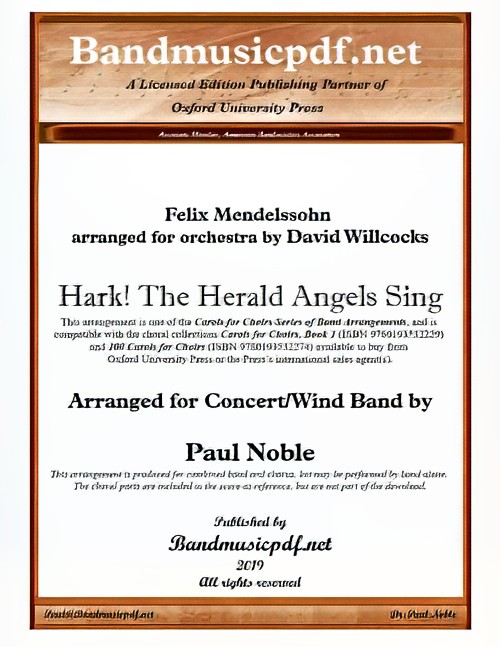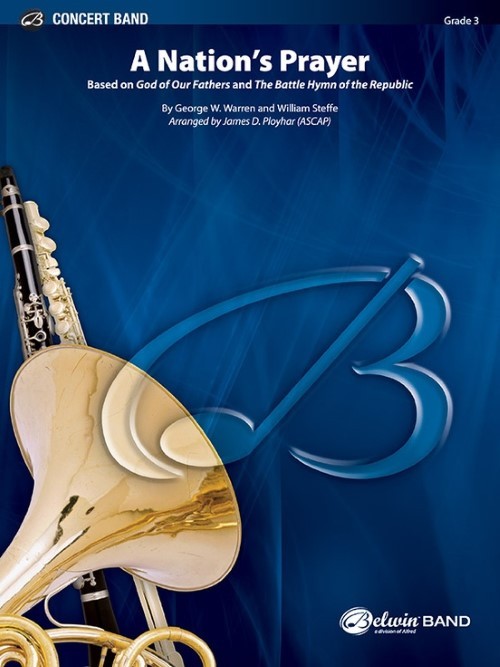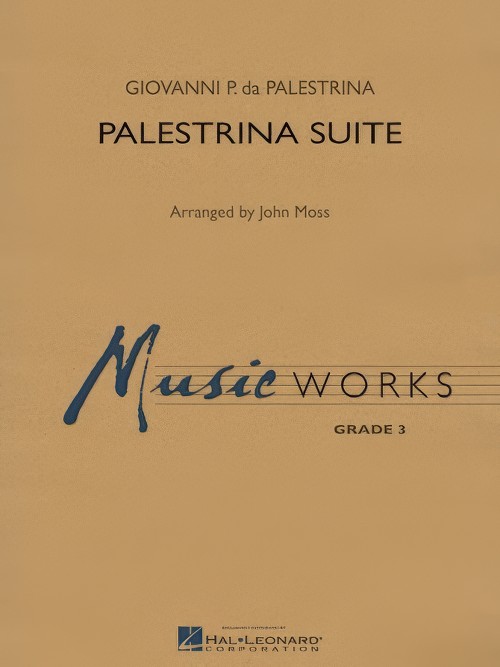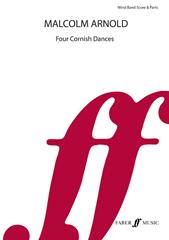Results
-
 £75.00
£75.00Hark! The Herald Angels Sing (Concert Band with Optional Choir - Score and Parts) - Mendelssohn, Felix - Noble & Willcocks
Hark! The Herald Angels Sing is a Christmas carol that first appeared in 1739 in the collection Hymns and Sacred Poems. Its lyrics had been written by Charles Wesley. Inspired by the sounds of London church bells while walking to church on Christmas Day, he wrote the Hark poem about a year after his conversion to be read on Christmas Day. The popular version is the result of alterations by various hands, notably by Wesley's co-worker George Whitefield who changed the opening couplet to the familiar one, and by Felix Mendelssohn, whose melody was used for the lyrics. In 1840, a hundred years after the publication of Hymns and Sacred Poems, Mendelssohn composed a cantata to commemorate Johann Gutenberg's invention of movable type printing, and it is music from this cantata, adapted by the English musician William H. Cummings to fit the lyrics of Hark! The Herald Angels Sing, that propels the carol known today. This arrangement represents one in the Series of Band Arrangements compatible with David Willcocks' Carols for Choirs.
Estimated dispatch 7-14 working days
-
 £64.50
£64.50A Nation's Prayer (Concert Band - Score and Parts) - Steffe & Warren - Ployhar, James D.
Two of America's most beloved hymns are combined in this arrangement entitled A Nation's Prayer. Both of these hymns capture the spirit of this country and appeal to the patriotic fervor that is in the heart of every responsible citizen. This arrangement is a tribute to those who have served and to those that continue to serve the nation in time of conflict. Duration: 4.15
Estimated dispatch 7-14 working days
-
 £60.99
£60.99Palestrina Suite (Concert Band - Score and Parts) - Palestrina, Giovanni - Moss, John
Hymns by Giovanni de Palestrina pre-date those of Bach by over a century and incorporate the great polyphonic tradition of Renaissance writing. The compositions used in this suite are from a collection published in 1589 titled Hymns of the Entire Year, and incorporate antiphonal choral effects that lend themselves particularly well to instrumental settings. John Moss uses richly contrasting tone colours and textures as well as characteristic modal tonalities in this wonderful setting for band.Duration: 3.30
Estimated dispatch 7-14 working days
-
 £60.99
£60.99Palestrina Suite - Giovanni Pierluigi da Palestrina
Hymns by Giovanni de Palestrina pre-date those of Bach by over a century and incorporate the great polyphonic tradition of Renaissance writing. The compositions used in this suite are from a collection published in 1589 titled Hymns of the Entire Year, and incorporate antiphonal choral effects that lend themselves particularly well to instrumental settings. John Moss uses richly contrasting tone colors and textures as well as characteristic modal tonalities in this wonderful setting for band. Dur: 3:30 (Includes Full Performance CD)
Estimated dispatch 7-14 working days
-
£29.95
God So Loved the World - Score and Parts - Sir John Stainer
The Crucifixion, an oratorio composed by John Stainer in 1887 was designed in such a way that most church choirs would find it accessible. Also, it helpfully includes five hymns so that the congregation can contribute also. Whilst the text for this work was written by W J Sparrow Simpson, who worked with Stainer in an earlier work entitled 'Mary Magdalene', that used in this setting of 'God, so loved the world' is literal from John 3 verse 16 in the scriptures. This movement of 'The Crucifixion' is the most popular and widely used.
Estimated dispatch 7-14 working days
-
£5.95
God So Loved the World - Score only - Sir John Stainer
The Crucifixion, an oratorio composed by John Stainer in 1887 was designed in such a way that most church choirs would find it accessible. Also, it helpfully includes five hymns so that the congregation can contribute also. Whilst the text for this work was written by W J Sparrow Simpson, who worked with Stainer in an earlier work entitled 'Mary Magdalene', that used in this setting of 'God, so loved the world' is literal from John 3 verse 16 in the scriptures. This movement of 'The Crucifixion' is the most popular and widely used.
Estimated dispatch 7-14 working days
-
£75.00
Four Cornish Dances - Malcolm Arnold
Ray Farr's arrangement of Malcolm Arnold's Four Cornish Dances suite brilliantly retains the atmosphere of the orchestral original with its evocation of Cornish sea-farers, of deserted tin mines, of marching bands, Methodism, May Days and Moody and Sankey hymns. Wind Band Grade 5: Advanced Duration: 10 minutes
In stock: Estimated delivery 1-3 days
-
 £22.42
£22.42All Tuned Up - 120 Famous Tunes for All Occasions (Full Score A4 Size) PDFs
This unique new resource from BrookWright Music will be an essential part of every band's library! All Tuned Up is designed to cater for ensembles for occasions throughout the year. Tunes are drawn from genres including Classical, Hymns, Folk and Patriotic amongst many others to form a comprehensive book that will cover a wide variety of events such as Weddings, Funerals, Graduation Ceremonies, Parties, Proms, Remembrance, Street Playing and Thanksgiving. Playable by as few as five players but also designed to work for full brass band or wind band, it features flexible parts in a wide variety of transpositions. These excellent arrangements have been expertly created by Andrew Wainwright, David E. Jones, Dean H. Jones and Steven Ponsford. The general harmonic format of All Tuned Up is in five parts, although additional notes have been included to thicken the harmony where more players are available. Therefore, the book will work equally well with larger groups, including full brass bands and wind bands. To view a promotional video please visit www.youtube.com/watch?v=nmodRrXQRRs At the end of the Part 1 Bb book are four a capela tunes for Remembrance/Memorial occasions. This PDF download is International Size - A4 (297mm x 210mm) Physical copies of the books available from: UK - Individual Books Full Set Brass Band Set USA - www.solidbrassmusic.com/product/all-tuned-up-ensemble-books
In stock: Estimated dispatch 1-3 days
-
 £82.22
£82.22All Tuned Up - 120 Famous Tunes for All Occasions (Brass Band Set - A5) PDFs
This unique new resource from BrookWright Music will be an essential part of every band's library! All Tuned Up is designed to cater for ensembles for occasions throughout the year. Tunes are drawn from genres including Classical, Hymns, Folk and Patriotic amongst many others to form a comprehensive book that will cover a wide variety of events such as Weddings, Funerals, Graduation Ceremonies, Parties, Proms, Remembrance, Street Playing and Thanksgiving. Playable by as few as five players but also designed to work for full brass band or wind band, it features flexible parts in a wide variety of transpositions. These excellent arrangements have been expertly created by Andrew Wainwright, David E. Jones, Dean H. Jones and Steven Ponsford. The general harmonic format of All Tuned Up is in five parts, although additional notes have been included to thicken the harmony where more players are available. Therefore, the book will work equally well with larger groups, including full brass bands and wind bands. To view a promotional video please visit www.youtube.com/watch?v=nmodRrXQRRs At the end of the Part 1 Bb book are four a capela tunes for Remembrance/Memorial occasions. This PDF download is for International sizes: Full Score - A4 Size - 297mm x 210mm Band Parts - A5 Size - 210mm x 148mm Physical copies of the books available from: UK - Individual Books Full Set Brass Band Set USA - www.solidbrassmusic.com/product/all-tuned-up-ensemble-books The Brass Band set includes: Full Score Part 1 Eb (optional) - Soprano Cornet Eb Part 1 Bb - Cornet Bb, Flugel Part 2 Bb - Cornet Bb, Flugel Part 2 Eb - Tenor Horn Part 3 Bb - Baritone, Trombone, Euphonium Part 3 Eb - Tenor Horn Part 4 Bb - Euphonium, Baritone Part 5 C (Bass Clef) - Bass Trombone Part 5 Eb - Bass Eb Part 5 Bb - Bass Bb Percussion (optional) - Various
In stock: Estimated dispatch 1-3 days
-
 £112.13
£112.13All Tuned Up - 120 Famous Tunes for All Occasions (Full Set - A5) PDFs
This unique new resource from BrookWright Music will be an essential part of every band's library! All Tuned Up is designed to cater for ensembles for occasions throughout the year. Tunes are drawn from genres including Classical, Hymns, Folk and Patriotic amongst many others to form a comprehensive book that will cover a wide variety of events such as Weddings, Funerals, Graduation Ceremonies, Parties, Proms, Remembrance, Street Playing and Thanksgiving. Playable by as few as five players but also designed to work for full brass band or wind band, it features flexible parts in a wide variety of transpositions. These excellent arrangements have been expertly created by Andrew Wainwright, David E. Jones, Dean H. Jones and Steven Ponsford. The general harmonic format of All Tuned Up is in five parts, although additional notes have been included to thicken the harmony where more players are available. Therefore, the book will work equally well with larger groups, including full brass bands and wind bands. At the end of the Part 1 Bb book are four a capela tunes for Remembrance/Memorial occasions. To view a promotional video please visit https://www.youtube.com/watch?v=nmodRrXQRRs This PDF download is for International sizes: Full Score - A4 Size - 297mm x 210mm Band Parts - A5 Size - 210mm x 148mm Physical copies of the books available from: UK - Individual Books Full Set Brass Band Set USA - www.solidbrassmusic.com/product/all-tuned-up-ensemble-books The full set includes: Full Score Part 1 Eb (optional) - Soprano Cornet/Trumpet Eb, Clarinet Eb Part 1 Bb - Cornet/Trumpet Bb, Clarinet Bb, Flugel, Soprano Saxophone Part 1 C - Piccolo, Flute, Oboe, Part 2 Bb - Cornet/Trumpet, Clarinet Bb, Flugel Part 2 Eb - Tenor Horn, Alto Saxophone, Alto Clarinet Eb Part 2 F - Horn, Cor Anglais Part 3 Bb - Baritone, Trombone, Euphonium, Tenor Saxophone, Part 3 C (Bass clef) - Baritone, Trombone, Euphonium Part 3 Eb - Tenor Horn, Alto Saxophone, Alto Clarinet Eb Part 3 F - Horn, Cor Anglais Part 4 Bb - Euphonium, Baritone, Tenor Saxophone Part 4 C (Bass clef) - Euphonium, Baritone, Bassoon Part 5 Eb - Bass Eb, Baritone Saxophone Part 5 Bb - Bass Bb, Bass Clarinet Part 5 C (Bass clef) - Tuba, Bassoon, String Bass Percussion (optional) - Various
In stock: Estimated dispatch 1-3 days

